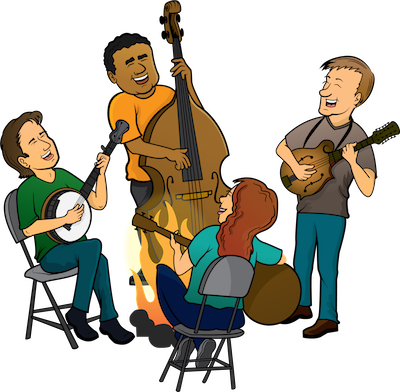“What Is Jamming in Music?” is an informative article by Emily Hughes that explores the concept of jamming in music. Jamming refers to the act of playing musical instruments together in an improvised way, usually done for the enjoyment and fun of it. This article delves into the process of learning how to jam, including tips on knowing your instrument, practicing with favorite songs, and jamming with others. It also provides insight on how to start a jam session, emphasizing the importance of choosing the right group of musicians, starting slow, and respecting other musicians. With practical advice and useful tips, this article serves as a comprehensive guide for anyone interested in exploring the world of jamming in music.
Learning how to Jam
Jamming is a great way to improve your musical skills and have fun with your instrument. Whether you’re a guitarist, keyboardist, drummer, or any other musician, learning how to jam can enhance your playing abilities and give you the opportunity to collaborate with other musicians. This article will guide you through the process of learning how to jam and provide helpful tips for starting your own jam session.
Learn a few things first
Before diving into jamming, it’s important to learn a few basic skills. If you’re a guitarist, familiarize yourself with some basic chords so you can easily join in during a jam session. Having a basic understanding of chord progressions and melodies will make it easier to play along with others. You don’t need to be an expert, but having a foundation of knowledge will be beneficial.
Know your Instrument
To effectively jam with other musicians, it’s crucial to know how to play your instrument. Whether you’re a keyboardist, drummer, or any other musician, understanding how to play the notes and rhythms is essential. Familiarize yourself with the different techniques and techniques that are commonly used in jamming. Knowing your instrument inside and out will allow you to confidently participate in a jam session.

Listen and watch
To further develop your jamming skills, take the time to listen to and watch other musicians. There are numerous videos available online that showcase different bands and musicians jamming together. Pay attention to how they interact with each other and try to mimic their style. By observing and learning from experienced musicians, you can gain valuable insight and inspiration for your own jamming sessions.
Practice with your favorite songs
One of the best ways to improve your jamming skills is by practicing with your favorite songs. Choose a song that you’re familiar with and try to play along with the recording. This will help you develop your ability to keep up with the rhythm and flow of the music. Remember, it’s not about being perfect; it’s about finding your own groove and enjoying the process. By practicing with songs you love, you’ll build confidence and become more comfortable when jamming with others.

Jam with others
While practicing on your own is important, there’s no better way to learn and grow than by jamming with others. Find some like-minded musicians or friends who are interested in jamming, and get together to play some music. Jamming with others allows you to experience different styles and techniques, and it fosters a sense of camaraderie and collaboration. Embrace the opportunity to share your musical talents and ideas, and be open to learning from others. Jamming with a group will challenge you to adapt to different playing styles and improve your overall musicianship.
How to Start a Jam Session
Once you’ve honed your jamming skills, it’s time to start your own jam session. Whether you’re organizing an informal gathering with friends or participating in a more structured session, there are several key steps to follow to ensure a successful jamming experience. Here’s a step-by-step guide on how to start a jam session.
Choose the right group of musicians
When starting a jam session, it’s important to choose the right group of musicians to play with. Consider the skill level, musical interests, and compatibility of potential participants. If you’re a beginner, it may be more comfortable to jam with other musicians who are at a similar level. On the other hand, if you’re more advanced, playing with more experienced musicians can push you to grow and learn. The key is finding a group of musicians who share your enthusiasm for jamming and are willing to collaborate and support each other’s creativity.

Start slow
It’s natural to feel excited and eager to jump into complex songs and intricate melodies when starting a jam session. However, it’s important to start slow and ease into the session. Begin with simple chord progressions or familiar tunes to get everyone warmed up and comfortable. Starting slow allows everyone to find their groove and build confidence before tackling more challenging material.
Identify the type of songs you want to play
Before starting your jam session, it’s helpful to identify the type of songs you want to play. Discuss with the group the genres, artists, or specific songs that interest everyone. This will ensure that everyone is on the same page and enjoys the music that is being played. It’s also a good idea to listen to music featuring jamming sessions beforehand to get a feel for what to expect and how to collaborate. Being familiar with the tunes and chords will help facilitate a smooth and enjoyable jamming experience.

Split up the parts
One of the best ways to facilitate a cohesive and dynamic jam session is by splitting up the parts. If there are multiple musicians in the group, take turns leading the jam. Each person can have a moment to shine and showcase their skills while the others support them by playing accompanying parts. This rotation system keeps everyone engaged and ensures that each musician has the opportunity to contribute creatively.
Respect other musicians
While it’s important to express your creativity and explore new ideas during a jam session, it’s equally important to respect other musicians. Listen to what others are playing and be mindful of their contributions. Avoid overpowering or overshadowing your fellow musicians, as this can hinder the collaborative process. Instead, find ways to complement and enhance each other’s playing. By respecting and supporting each other, you’ll create a positive and fulfilling jamming environment.

Wait your turn
When participating in a jam session, it’s essential to be patient and wait your turn. Avoid interrupting or overshadowing others and give everyone an opportunity to contribute. Each musician should have a chance to lead and express their musical ideas. By taking turns and practicing patience, you’ll promote a harmonious and inclusive jamming experience.
Be prepared to make mistakes
Jamming is all about experimentation and spontaneity, so it’s important to be prepared to make mistakes. Trying new techniques, exploring unfamiliar genres, and improvising can lead to unexpected outcomes. Embrace these moments of uncertainty and view them as learning opportunities. Mistakes are a natural part of the learning process, and they often result in new and exciting musical discoveries. Don’t be discouraged by errors; instead, use them as stepping stones to further develop your skills and musical style.
Decide when to end the song
Jam sessions can be filled with energy and enthusiasm, but it’s important to know when to end the song. Not every jam session needs to go on indefinitely, and it’s essential to be mindful of everyone’s energy and time constraints. Pay attention to the flow of the music and the engagement of the group. If you sense that the session is winding down or if fatigue is setting in, communicate with the other musicians and gracefully bring the song to a close. Ending on a high note ensures a positive and satisfying jamming experience for everyone involved.
Set goals for the next session
After wrapping up a jam session, it’s beneficial to set goals for the next one. Take a moment to reflect on what worked well and what areas could be improved. Discuss with the group the songs or techniques that you’d like to explore in the future. Setting goals provides direction and motivation for future jam sessions, and it allows everyone to work towards a common objective. By continually setting new goals, you’ll ensure that each jam session builds upon the previous ones and facilitates growth and progression as musicians.
Conclusion
Jamming is a unique and exciting way to express your musical creativity and connect with other musicians. Whether you’re a seasoned jammer or a beginner exploring this improvisational art form, learning how to jam and starting your own jam sessions can be a rewarding and enriching experience. By following the tips and guidelines provided in this article, you’ll be well-equipped to embark on your jamming journey. Remember to embrace the spontaneity, respect your fellow musicians, and have fun while exploring new musical territories. Happy jamming!

